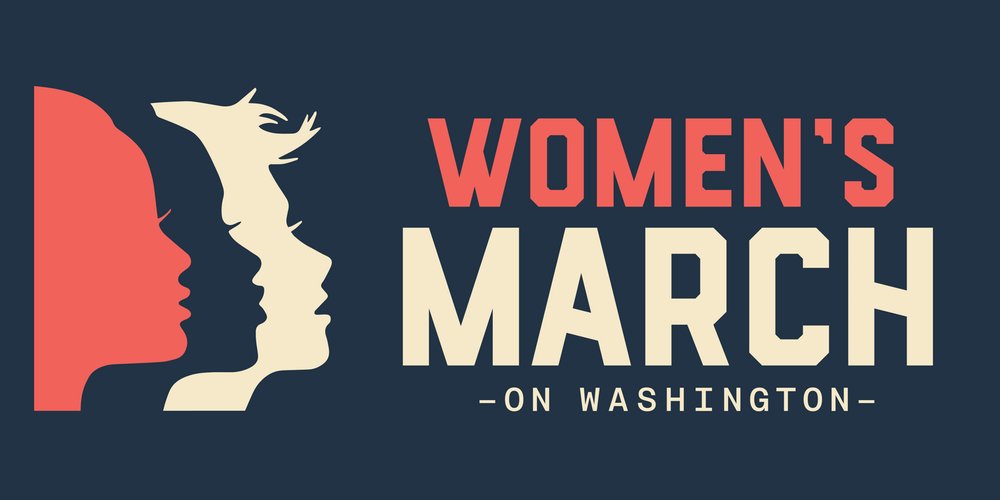The Power of the Pantsuit: The Women’s March on Washington
By Melissa Ooten | ARTICLES

On January 20, Donald Trump will be inaugurated as the 45th president of the United States. The day after, many thousands will gather in Washington, DC to participate in the Women’s March on Washington. The march represents a long history of activists gathering in large numbers to pressure presidential administrations and Congress to either make good on promises or, in this case, to demonstrate to an administration that seems hostile to women’s rights that any potential curtailing of those rights will be met with strong and loud resistance.
Many historical antecedents for marching on Washington exist. In 1941, civil rights activist J. Philip Randolph, founder of the Brotherhood of Sleeping Car Porters, called for a march to highlight the national defense industry’s refusal to hire black workers, despite a shortage of workers to supply the Allied powers fighting overseas. (Randolph canceled the march when Franklin D. Roosevelt issued an executive order to create a commission to investigate charges of racist hiring practices in the defense industry). More well known is the gathering of nearly a quarter million people for the March on Washington for Jobs and Freedom in August 1963. Perhaps best remembered for Martin Luther King Jr’s iconic “I Have a Dream” speech, activists organized the march to promote the Civil Rights bill then stalled in Congress. Less than a year later, Lyndon Johnson signed the Civil Rights Act of 1964 into law, which outlawed discrimination based on race, color, sex, religion, and national origin. The landmark law represented the culmination of decades of persistent organizing and activism in black communities across the nation.
The Women’s March on Washington is of a different ilk in that it has no one unifying theme and is not necessarily meant to assert pressure on what will be the day old Trump administration. Instead, it’s rooted in an incredibly polarizing presidential race in which the elected candidate received 46.1% of the popular vote compared to Clinton’s 48.2%, a difference of nearly 2.9 million votes.
Not only did Clinton, the first ever viable female presidential candidate nominated by one of the major parties, win the popular vote, but she also lost to a candidate who wielded anger, hate, and vitriol against nearly every conceivable demographic category of Americans, with perhaps the sole exception of straight, able-bodied white men. For many who value an inclusive, diverse society and indeed make up that very society, a Trump election, and now a Trump presidency, sends great anxiety over how that agenda will shape everything from environmental policies and reproductive rights to religious freedom and immigration laws. That anxiety has only increased with Trump’s cabinet appointments who, by late December 2016, held a combined wealth of over $13 billion, representing 34 times more wealth than the cabinet George W. Bush left office with in 2008.
Of course, clearly not all women fret over a Trump presidency. While 54% of women’s votes went for Clinton compared to Trump’s 42%, a majority of white women (53%) voted for Trump. White women without college degrees particularly favored him with 62% of their vote. In contrast, over 90% of Black women and 65% of Latinas and Asian women voted for Clinton.
There’s so much else to say here — about white privilege, class privilege, generational divides — in an election in which many people did not like either major candidate, and especially, in an election in which voting turnout hit a twenty year low.
But for now, I’ll return to the Women’s March on Washington. While the visibility of a mass gathering is an important public signal of resistance, no one mistakes such a gathering for effective political action. It will take everyday community organizing to create systemic change or, in this case, perhaps to simply resist potentially catastrophic policy decisions. States can serve as important bulwarks against the Trump agenda, meaning that political action at the state and local is more important than ever, particularly in states that easily sway between more conservative and more liberal candidates. One of those is my home state of Virginia, which will elect its next governor this fall.
At the end of the day, the majority of women voters cast a ballot for Hillary Clinton, and they and their many allies will arrive in Washington the day after Trump’s inauguration to “send a bold message to our new administration on their first day in office, and to the world, that women’s rights are human rights.”
It didn’t seem like that basic fact resonated much in the 2016 election, particularly in its result. Here’s to all the activists representing many diverse races, ethnicities, ages, religions, sexualities, genders, class divides, and more who will ensure that the U.S.’s newest presidential and Congressional representatives understand that the majority will hold them accountable to this fact in the coming years.
Below is a list of a handful of organizing groups working in Virginia:
Showing Up for Racial Justice (SURJ) Richmond
Virginia Anti-Violence Project
Defenders for Freedom, Justice, and Equality
Residents of Public Housing in Richmond against Mass Eviction (RePHRAME)
For further reading:
Alejandra Maria Salazar, “Organizers Hope Women’s March on Washington Inspires, Evolves,” NPR, December 21, 2016.
Clare Malone, “Clinton Couldn’t Win over White Women,” FiveThirtyEight.com, November 9, 2016.
Fortune.com, “Here’s How California Plans to Fight Donald Trump’s Immigration Plans,” December 6, 2016.
Gregory Wallace, “Voter Turnout at 20 Year Low in 2016,” CNN, November 30, 2016.
Tamy Luhby, “How Hillary Clinton Lost,” CNN, November 9, 2016.
Matt Rocheleau, “Trump’s Cabinet Picks so far Worth a Combined $13B,” Boston Globe, December 20, 2016.
Gregory Krieg, “It’s Official: Clinton Swamps Trump in Popular Vote,” CNN, December 22, 2016.